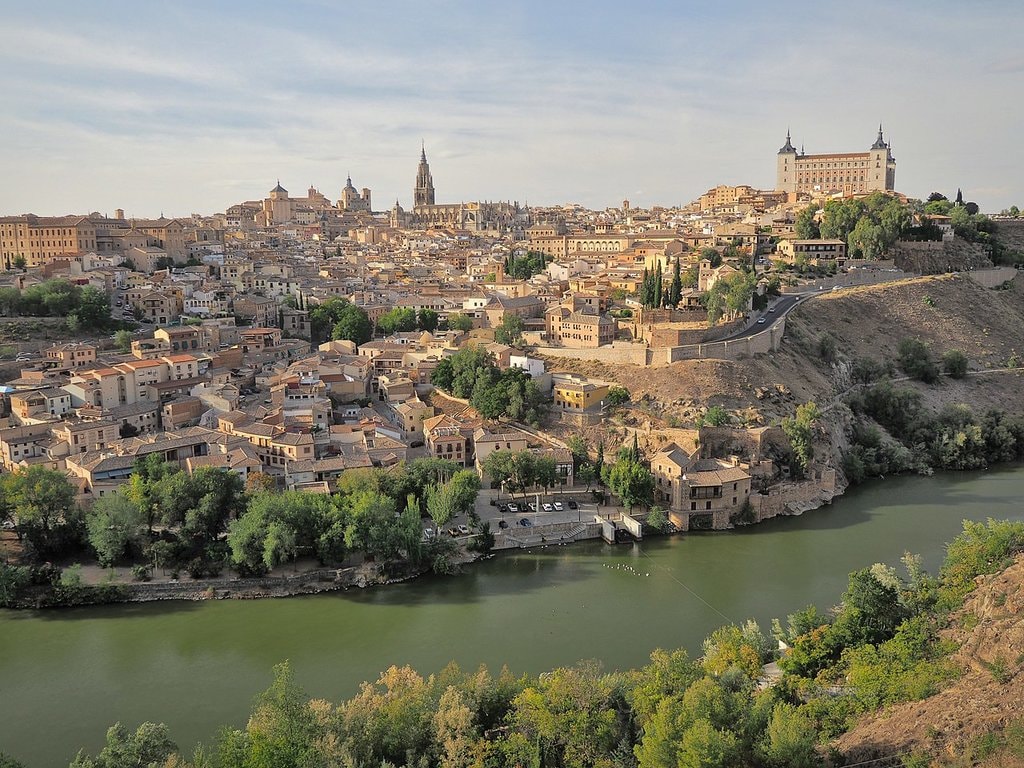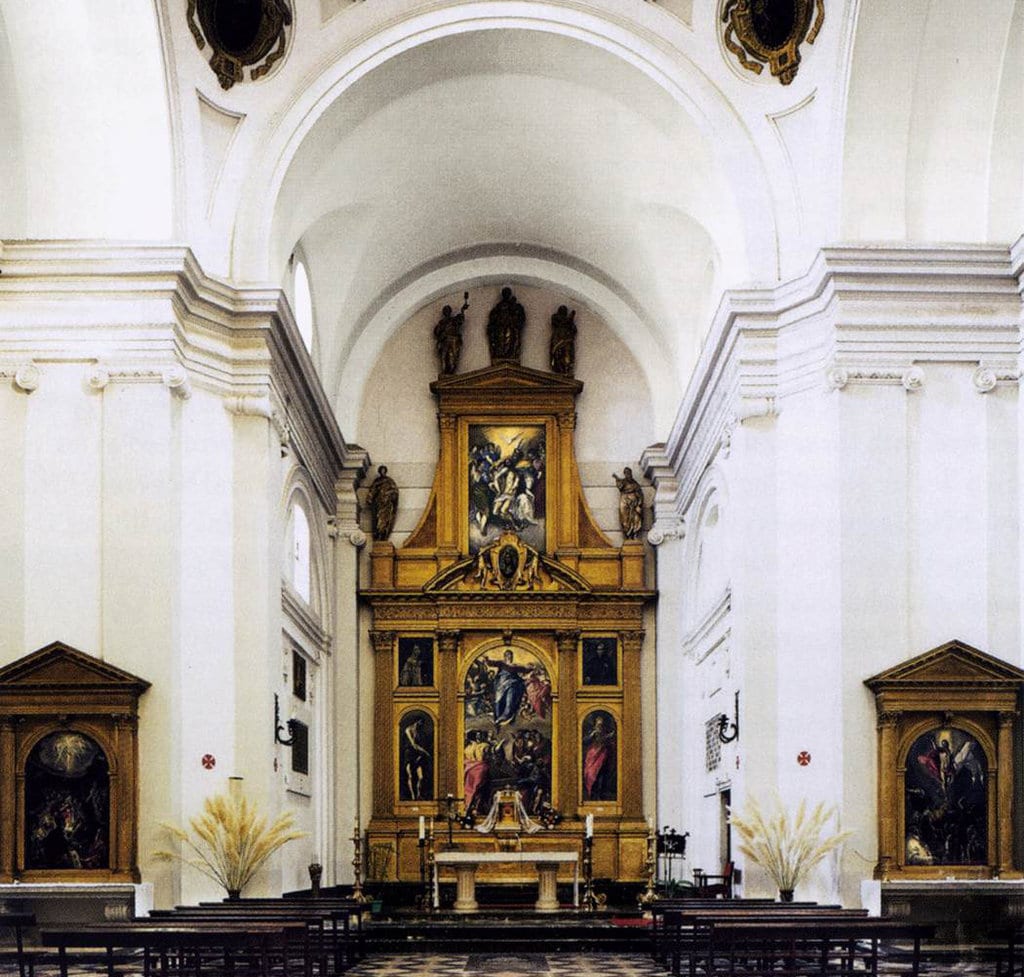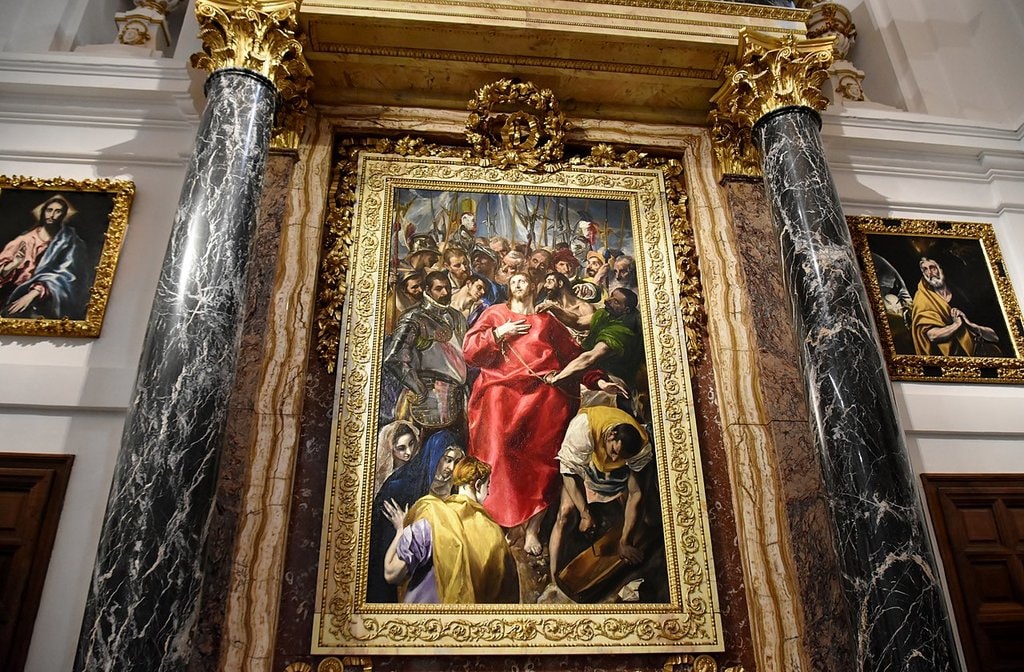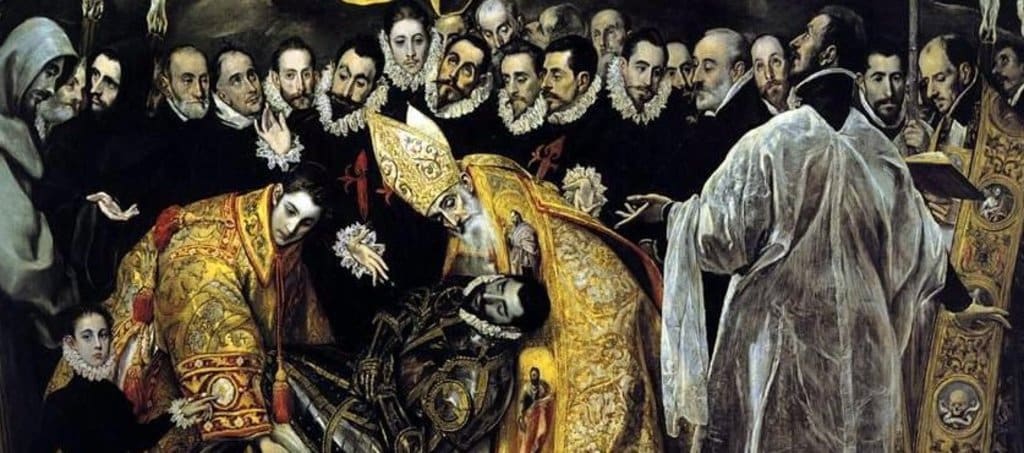Artistic Itinerary in Toledo
Less than an hour away by train from Madrid, Toledo awaits, a city full of history and culture. A journey to Toledo can often feel like a trip in time to a world of yesteryear. Discover the secrets of a legendary city that was officially declared a World Heritage Site in 1986.
History
——-
It’s not hard to envisage Toledo’s lengthy past, with its labyrinthine alleys and endless walls forged in hard stone. As you stroll down these alleys, you can’t help but breathe in the history of a city that was once the capital of Spain, by the imperial decision of Charles I.
It was under his mandate that some of the most important buildings in Toledo were constructed. Highlights include Hospital de la Santa Cruz, the famous Alcázar de Toledo, the Puerta Nueva de Bisagra and a myriad of small religious buildings. All of them stand out for their exquisite plateresque designs.
Of course, the capital city status didn’t last long as the monarch’s son, King Philip II, decided to move the court to Madrid. There he was closer to El Escorial, where he had planned his grandiose monastery.
Whatever the comings and goings of the monarchy, the city became a space for Christians, Jews and Muslims to live together. To this day it’s still known as the “City of the Three Cultures”, and is well known for its values of tolerance and respect for diversity, although some forget the expulsion of Sephardic Jews by the Catholic Monarchs.
It’s at this point in history when an outstanding artist appeared on the scene back in 1577. As brilliant as he was presumptuous and haughty, El Greco came up with the idea of becoming Philip II’s court painter. To the prude king, his works seemed more human than divine, and he rejected them outright.
The artist was, however, tied to Toledo for the rest of his life. That’s why at this point, we’d like to recommend you visit this marvellous city, with the abundance of places the genius developed his vocation.
In the footsteps of El Greco
——————————–
What is certain is that little is known for sure about the life of the painter in this city in Castille. He had already been to places such as Rome and Venice, where his art had benefited from patronages such as the Casa Farnesio.
However, his stay in this Spanish city is not as well documented. Practically the only documentary evidence we have are of the disputes of El Greco with some of those who had commissioned works. The reason: generally a failure to pay for the work as agreed.
Faced with a number of such problems, Domenikos Theotokopoulos decided to officially settle in the city. Toledo became a part of his life until his dying day.
His first works
—————
You won’t want to miss out on the first paintings that brought the genius to Toledo. They were commissioned by the son of the dean of the Toledo Cathedral. He was to work on the Convent of Santo Domingo el Antiguo.
The building, dating from the 6th century, has been remodelled several times since. The architecture stands out for its Mudéjar simplicity and has been declared a Site of Cultural Interest. Here he left his mark on the main altarpiece and two sides of the building.
Inside, a trio of original pieces is preserved: St. John the Baptist, the Evangelist and the Resurrection of Christ. It is in the monastery where, years later, the mortal remains of El Greco would be buried.
But, let’s not get ahead of ourselves and let’s move on to Luis de Castilla’s second commission. El Greco was to paint El Expolio, a painting that would honour the sacristy of the cathedral. There, supposedly, a valuable relic was kept: a small piece of the mantle that Jesus Christ himself wore before being crucified.
Seeing these canvases is to discover a talent that had now matured. The intensity and acidity of the pigmentation stand out, as well as a definite confidence when it comes to distributing the space.
The mastery of the chiaroscuro and the conception of the figures are proof of a superb artist. Confident in his technique, with elongated, ethereal human representations in compositions that are full of dynamism and life.
However, he had no small difficulty in extracting his pay from the cathedral. In spite of this, the quality of his work helped him to create new opportunities to capture his art.
The upper class embraced his rare talent to immortalise their portraits and work in churches and chapels they were funding. One of his greatest pieces, The Burial of the Lord of Orgaz, dates from this period.
### The House of El Greco
It’s probably around this time when he moved to live in one of the properties of the Marquis of Villena. It should be noted that there is no certainty as to where the painter’s real residence was located.
Visitors can now visit the El Greco Museum also known as the House-museum of El Greco. However, this property was bought at the beginning of the 20th century. It’s located close to the house that would have housed the mannerist painter and which was lost in a fire.
The building in the Jewish Quarter was restored and decorated with tools from the period. A collection of his works are on display there: The Apostolate, the portraits of the Covarrubias, The Redeemer and View and Plan of Toledo.
### The Jewish Quarter
Taking advantage of the museum’s location, now’s a good time to walk through one of the most important historical areas of Toledo, its Jewish Quarter. It was here that the richest Jews of the city resided until their expulsion.
Visitors will enjoy strolling through the area in search of the Hebrew tiles found along the route. They served to mark the perimeter of the Jewish Quarter, in which we can still find houses and estates that give us an idea of the riches of the Sephardic community at the time.
One essential visit is to the Synagogue of Santa María La Blanca, an architectural gem that dates back to the 12th century. Exquisitely elaborate inside, its pillars and arches give it the air of a mosque. Today it belongs to the Catholic church, although worship is not practised here and it’s open to the public.
Discover Toledo
—————
As a visitor, you’ll be interested to learn that Toledo is the ideal city for tourists looking to create their own route. Whatever the path you choose to take, they all have something in common, the dreamlike gaze of the extraordinary artist.
Lose yourself along the streets and explore even the alleyways and admire the views of the city from the other side of the Tagus River. Of course, here we only offer suggestions. A getaway to Toledo is a safe bet for anyone interested in cultural vacations.”
More Articles With Art
Discover the very best museums and galleries through virtual tours. From London to New York, explore these online museums without leaving your home!
Find everything you need for a fun visit to the York Art Gallery with this comprehensive visitor’s guide.
Discover the top art galleries in London to experience some history and culture on your holiday.
Discover the top art galleries in Manchester to experience culture and history on your next holiday.
Visiting the spas and Georgian buildings of Bath? Check out our visitor’s guide to the Fashion Museum.




